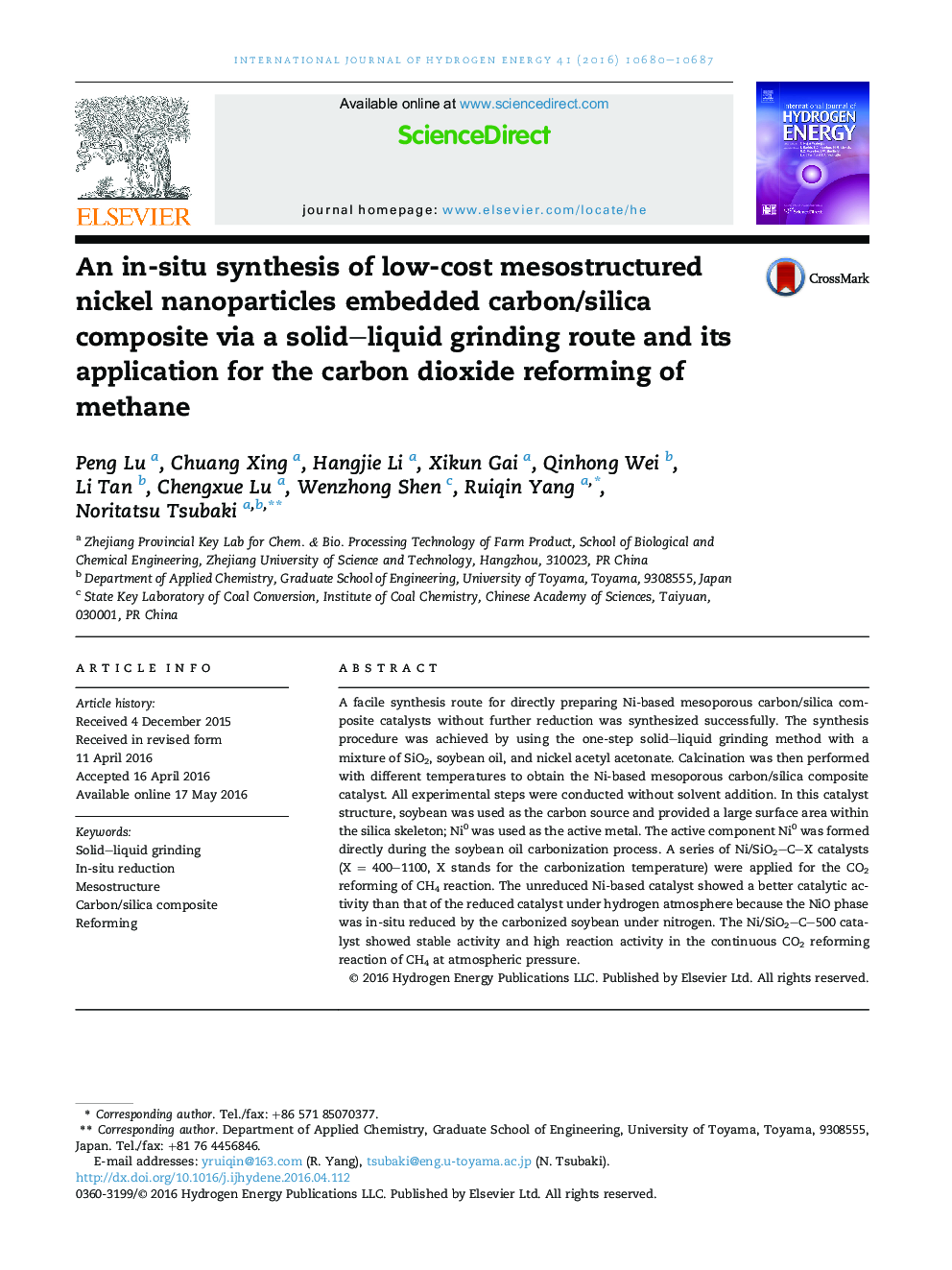| کد مقاله | کد نشریه | سال انتشار | مقاله انگلیسی | نسخه تمام متن |
|---|---|---|---|---|
| 1276793 | 1497400 | 2016 | 8 صفحه PDF | دانلود رایگان |

• Ni-based mesoporous carbon/silica composite catalysts were synthesized successfully.
• Ni0 as the active metal was formed directly during the soybean oil carbonization process.
• The Ni/SiO2–C–500 catalyst showed a better catalytic activity than that of the reduced catalyst under hydrogen atmosphere.
A facile synthesis route for directly preparing Ni-based mesoporous carbon/silica composite catalysts without further reduction was synthesized successfully. The synthesis procedure was achieved by using the one-step solid–liquid grinding method with a mixture of SiO2, soybean oil, and nickel acetyl acetonate. Calcination was then performed with different temperatures to obtain the Ni-based mesoporous carbon/silica composite catalyst. All experimental steps were conducted without solvent addition. In this catalyst structure, soybean was used as the carbon source and provided a large surface area within the silica skeleton; Ni0 was used as the active metal. The active component Ni0 was formed directly during the soybean oil carbonization process. A series of Ni/SiO2–C–X catalysts (X = 400–1100, X stands for the carbonization temperature) were applied for the CO2 reforming of CH4 reaction. The unreduced Ni-based catalyst showed a better catalytic activity than that of the reduced catalyst under hydrogen atmosphere because the NiO phase was in-situ reduced by the carbonized soybean under nitrogen. The Ni/SiO2–C–500 catalyst showed stable activity and high reaction activity in the continuous CO2 reforming reaction of CH4 at atmospheric pressure.
Figure optionsDownload as PowerPoint slide
Journal: International Journal of Hydrogen Energy - Volume 41, Issue 25, 6 July 2016, Pages 10680–10687